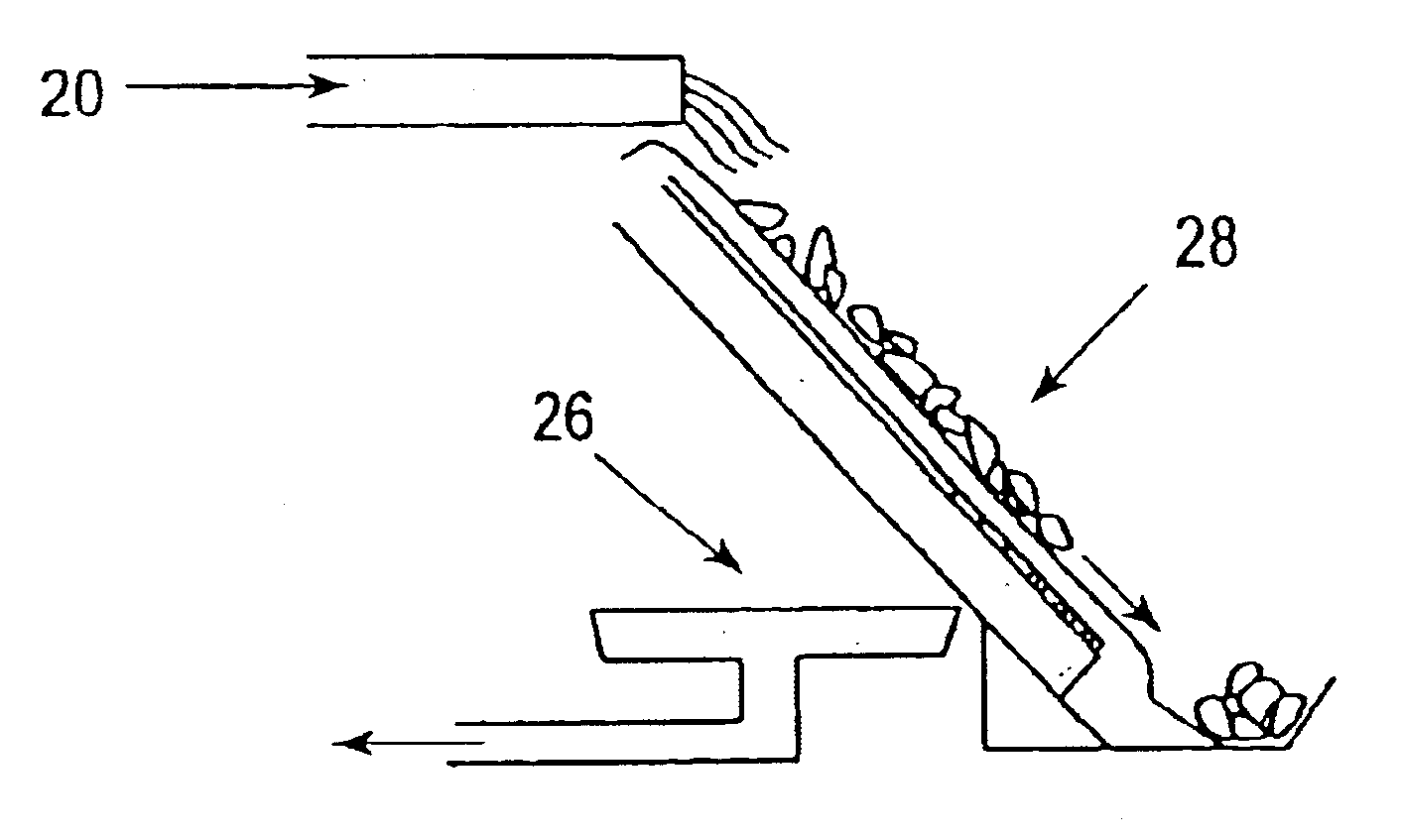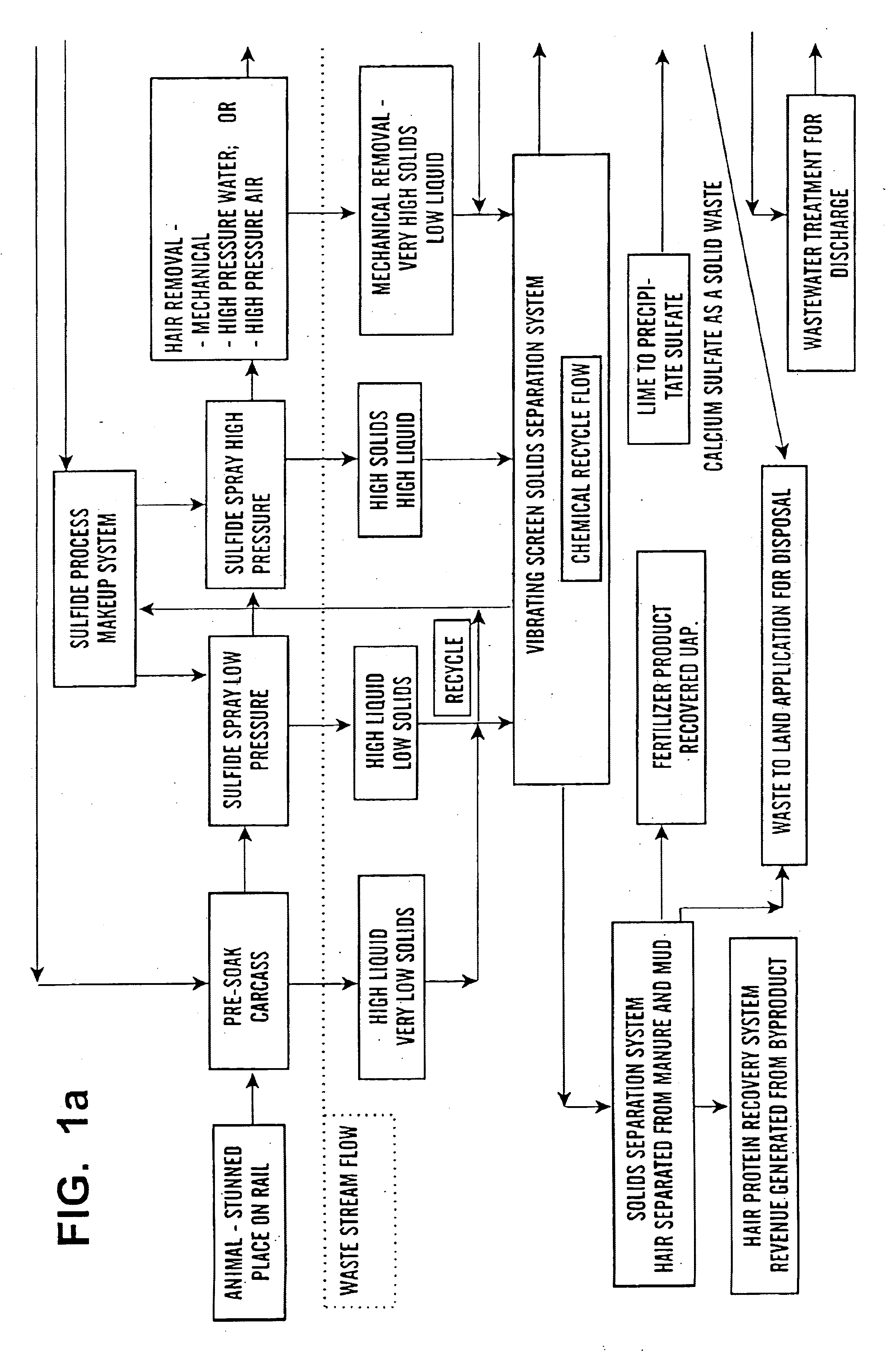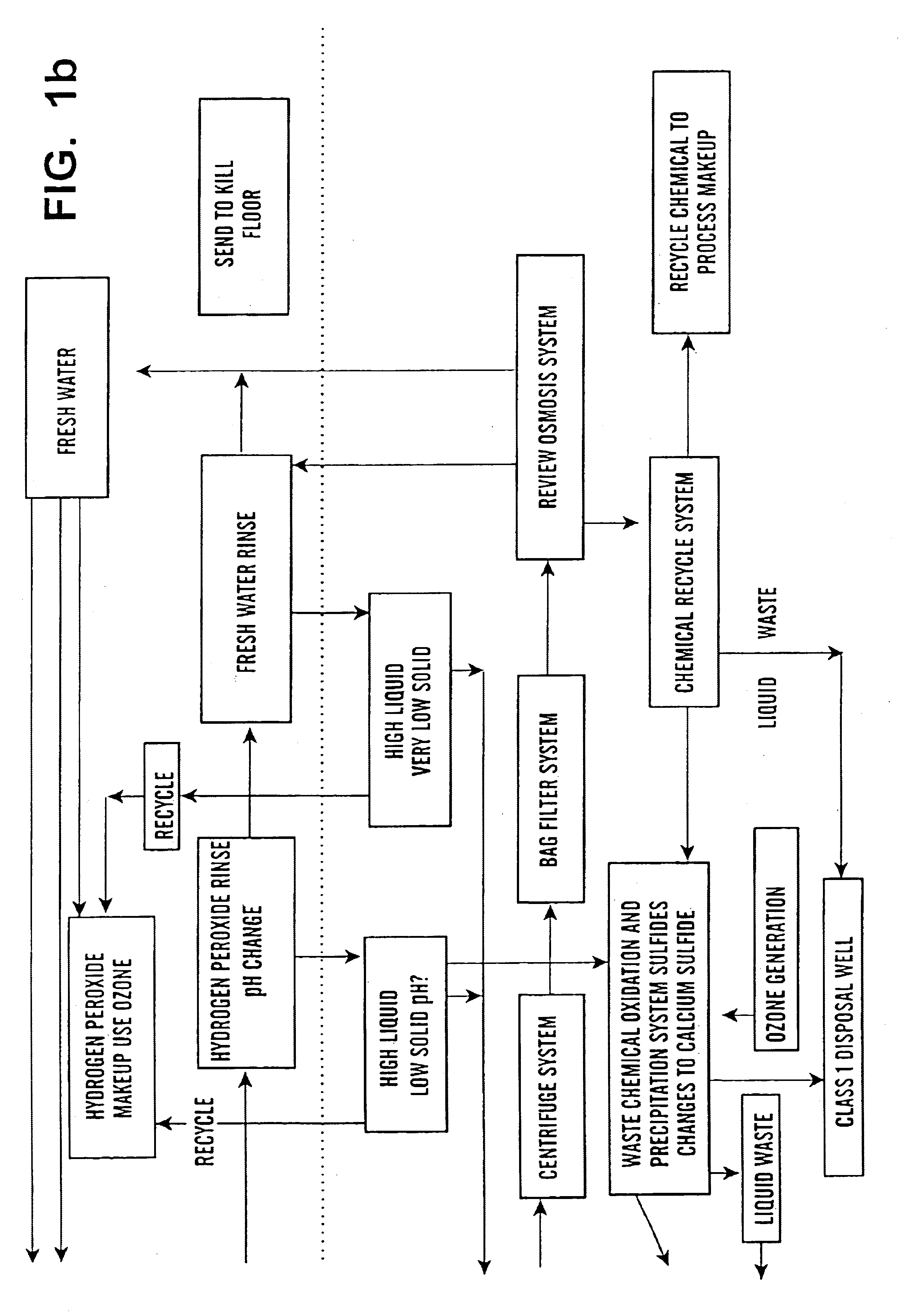Method and system for processing waste streams derived from the dehairing of animals
a technology of waste streams and animals, applied in the field of methods and systems for processing waste streams derived from animal hair dehairing, can solve the problems of reducing the shelf life and safety of meat products, affecting the quality of meat products,
- Summary
- Abstract
- Description
- Claims
- Application Information
AI Technical Summary
Benefits of technology
Problems solved by technology
Method used
Image
Examples
Embodiment Construction
[0024]The present invention reduces microbial contamination of meat and meat by-products by removing the hair of an animal before the disassembly of the animal during slaughtering, thereby substantially eliminating all foreign matter, including dirt, manure, blood, ingesta and most importantly, microorganisms, associated with animal hair. The present invention additionally provides a system for effectively recycling, reusing and disposing of chemical and animal products generated by the hair removal process which minimizes the cost and environmental impact of the dehairing method.
[0025]More particularly, the present invention provides a novel, comprehensive animal hair removal (dehairing) system which addresses various potential concerns with the animal hair removal process, including issues related to efficient and effective hair removal, sodium production in waste materials, production of H2S during the process, elimination or reduction of the use of certain chemicals in the proce...
PUM
| Property | Measurement | Unit |
|---|---|---|
| volume percent | aaaaa | aaaaa |
| volume percent | aaaaa | aaaaa |
| volume percent | aaaaa | aaaaa |
Abstract
Description
Claims
Application Information
 Login to View More
Login to View More - R&D
- Intellectual Property
- Life Sciences
- Materials
- Tech Scout
- Unparalleled Data Quality
- Higher Quality Content
- 60% Fewer Hallucinations
Browse by: Latest US Patents, China's latest patents, Technical Efficacy Thesaurus, Application Domain, Technology Topic, Popular Technical Reports.
© 2025 PatSnap. All rights reserved.Legal|Privacy policy|Modern Slavery Act Transparency Statement|Sitemap|About US| Contact US: help@patsnap.com



